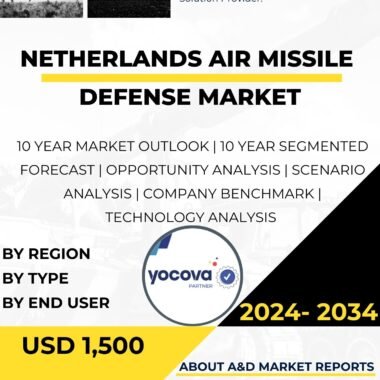Description
United Kingdom AESA Radar Market
The United Kingdom AESA radar technology has emerged as a game-changer in modern defense and aerospace applications, offering advanced capabilities and improved performance compared to traditional radar systems. The United Kingdom’s defense industry has been actively involved in the development and deployment of AESA radar, recognizing its strategic significance in enhancing situational awareness, surveillance, and targeting capabilities. This article explores the current state of the UK AESA radar market, its applications, key players, challenges, and future prospects.
AESA radar technology operates on a fundamentally different principle than conventional mechanically scanned radar systems. Instead of using a single, physically moving antenna, AESA radars employ an array of numerous small transmit and receive modules that can independently steer the radar beam electronically. This agility allows for rapid and precise beam scanning, enhancing radar performance and offering significant advantages in military and civilian applications.
In the defense sector, AESA radars have become a cornerstone of modern combat aircraft, naval vessels, and ground-based air defense systems. The UK’s Royal Air Force (RAF) has been at the forefront of AESA radar adoption, incorporating advanced systems into its frontline aircraft like the Eurofighter Typhoon. AESA radars offer exceptional range, detection capabilities, and resistance to electronic countermeasures, providing a decisive edge in air superiority and multi-role missions.
Naval applications of AESA radar are equally critical for maritime security and surveillance. UK Navy vessels are equipped with AESA radars to detect and track airborne threats, enhance maritime domain awareness, and provide real-time data for effective decision-making. AESA radars’ ability to simultaneously perform multiple functions, such as surveillance, tracking, and communication, ensures a comprehensive and integrated approach to maritime operations.
Beyond defense applications, AESA radar technology is finding use in civilian sectors such as weather monitoring, air traffic control, and disaster management. Its superior range, resolution, and versatility make it valuable for monitoring weather patterns, detecting air traffic, and providing timely information for disaster response and management.
The UK’s AESA radar market comprises a mix of domestic companies and international players. British defense firms, often collaborating with government research institutions, have made significant contributions to AESA radar technology development. At the same time, multinational aerospace and defense corporations with a presence in the UK have brought their expertise and resources to advance the technology further.
Challenges in the UK AESA radar market revolve around technical complexity, cost considerations, and global competition. The intricate nature of AESA radar technology demands skilled engineers and substantial investments in research and development. While AESA radars offer superior performance, they can be costly to produce and maintain, making affordability a concern for some potential buyers.
Moreover, global competition in AESA radar technology is intense, with major defense exporters vying for contracts worldwide. The UK defense industry faces competition not only from traditional players like the United States and Russia but also from emerging defense manufacturers in Asia and Europe. In this highly competitive landscape, innovation, cost-effectiveness, and responsive customer support become crucial differentiators.
Furthermore, integrating AESA radar systems into existing platforms and retrofitting older assets can be technically challenging. Ensuring seamless compatibility with legacy systems and optimizing performance may require substantial engineering efforts and validation.
However, the future prospects of the UK AESA radar market remain positive. As defense budgets and modernization programs continue to prioritize cutting-edge technologies, AESA radar systems are expected to witness increasing adoption. The UK government’s commitment to strengthening its defense capabilities and maintaining strategic partnerships with allied nations further bolsters the market’s outlook.
Advancements in semiconductor technology and signal processing will drive continuous improvement in AESA radar performance while reducing production costs. These advancements will enable more widespread deployment of AESA radars across various defense platforms, including unmanned aerial vehicles (UAVs) and ground-based air defense systems.
International collaborations and joint development programs also offer growth opportunities for the UK AESA radar market. Partnering with other technologically advanced nations allows the UK to pool resources, share expertise, and access larger markets, thereby fostering innovation and competitiveness.
In conclusion, the United Kingdom’s AESA radar market holds considerable promise, driven by the technology’s superior performance and versatility. Applications in defense, maritime security, and civilian sectors underscore the value of AESA radar technology. Addressing challenges related to technical complexity, cost, and global competition is critical for sustained growth and leadership in the AESA radar market. Continued investment in research, innovation, and international collaboration will position the UK as a leading player in this transformative radar technology, ensuring enhanced defense capabilities and contributing to global security efforts.




